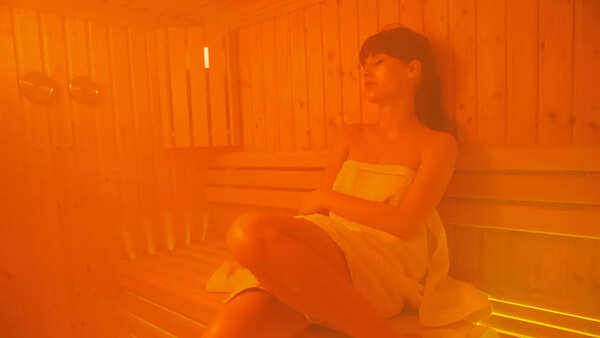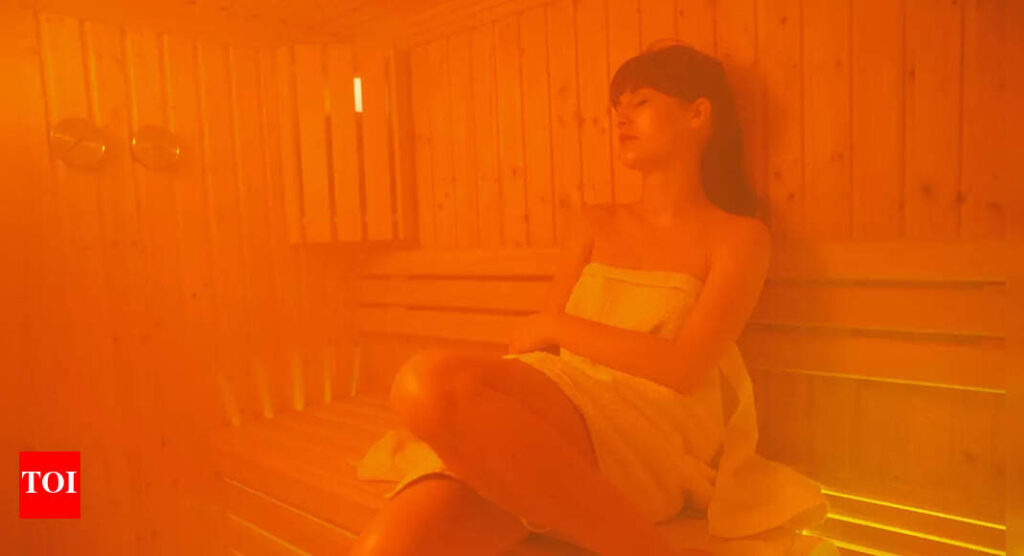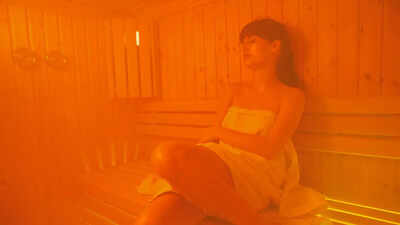Stepping into the saunas, especially during the winter months, is a ritual many swear by. The ‘steamy’ escape provides both relaxation and rejuvenation. But let’s be real. Not everyone can afford regular sauna sessions or have access to one. The good news? Well, research says you may not need one! According to new research, a simple bath ritual could deliver similar, if not greater, health benefits than traditional or far-infrared saunas.A new study by researchers at the Bowerman Sports Science Center at the University of Oregon, found a simple home ritual can beat a sauna for health benefits. The findings are published in the American Journal of Physiology.
A simple home ritual can beat sauna’s benefits

The simple ritual in question is the hot tub. Yes, that’s right. The new study found that hot-water immersion helped lower blood pressure and boost the immune system. The researchers compared the physiological effects of soaking in a hot tub to sitting in a traditional dry heat sauna or a more modern far-infrared sauna.They found that when core body temperature rises, while soaking in hot water, it can help lower blood pressure, stimulate the immune system, and, over time, improve the body’s response to heat stress. These benefits can last longer. “We compared the most commonly utilized modalities of passive heating as they’re used in everyday life and studied in scientific research. No studies have compared the acute responses between the three,” lead author Jessica Atencio, a doctoral student in the lab of Christopher Minson, said in a statement.
The study

The study involved 20 participants: 10 men and 10 women, aged 20 to 28, who exercised regularly. The researchers tracked body temperature, heart rate, blood pressure, cardiac output and various immune markers before, during, and after the subjects soaked in a hot tub and sat in traditional dry heat and far-infrared saunas.Their goal was to isolate the physiological responses to each heating method in a young, healthy population.“We saw that hot water immersion was the most impactful in increasing core body temperature, which is the main stimulus for these subsequent responses. Increasing body temperature causes an increase in blood flow, and just the force of blood moving across your vessels is beneficial for your vascular health,” Atencio said. The researchers also took blood samples from the participants after each kind of heat therapy. They found that only hot-water immersion produced an inflammatory response as measured by the levels of inflammatory cytokines, a kind of immune signaling molecule, and immune cell populations.
What are the experts saying

“Hot water immersion gives you the most robust changes in core temperature because you can’t effectively dissipate heat as you can if you have contact with the air and you’re sweating to cool the body. When you’re submerged in water, the sweat mechanisms aren’t efficient,” Atencio said.Minson, who studied heat therapies for more than two decades, focused on how heat interacts with factors such as age, exercise and illness in men and women.“There’s no doubt in my mind that if people are willing to do some heat therapy, it’s going to align with improved health, as long as it’s done in moderation. If you repeat these stresses over time, our lab and many others have shown that they are consistent with improved health,” Minson said.He also added that regular exercise can provide benefits similar to and even better in some respects than those from heat therapy. However, individuals who are unable or unwilling to exercise may find that heat therapy provides an attractive option.“It can be a very peaceful, sometimes religious, sometimes cultural and sometimes social experience. And I think those aspects contribute to the health benefits and are critically important. We want people to be smart and safe about it,” Minson said.
“We need to make sure that they are cleared by their physicians or others for heat therapy or for exercise, whether it’s mild to moderate walking or jogging or strength training. Then they’ll be fine to do heat therapy,” he added. Atencio suggested combining heat therapy with exercise. “We always say that exercise is the primary nonpharmacological treatment that people should be doing to promote health, but some people can’t or just won’t exercise. Heat therapy is good supplementation,” she said.


